- Renaissance and Mathias
- Clothes
- The Cuisine of king Matthias
- Folk beliefs, popular beliefs Mátyás being attached to a day
Renaissance and Mathias
Doubtless, that Mátyás Hunyadi was a Renaissance ruler in all of the senses of the word. From the Italy, an artistic tendency starting from Firenze primarily spread in three sections in Hungary. The first era fell on Mátyás reign, and in the four decades between 1460-1500 can be defined. The first early Renaissance buildings were built at this time in Hungary, they prepared at this time the stone cutter in workshops the first sculptures, reliefs, and the joiner special dress poems got out from under more beautiful furnitures, the tailors' hand at the more beautiful one in workshops.
The Hungary Renaissance second era Buda lasted from 1500 to him finding his way onto a Turkish hand, 1514. In these decades the Renaissance spreading of his age and the mature one can be observed.
The third era of his spreading is the Renaissance one on Hungary which can be observed after 1541. Feature, that rushed upon the three parts in a country for his Renaissance art three of his variants took shape, yet though the Transylvanian one, the highlands ones and the Dunántúl one.
Mátyás Hunyadi effect onto the later ages not only in the art, but the economic one and in the social life, the army organization, the fashion, furthermore in the diplomacy, the life was determining on all of his areas in brief.
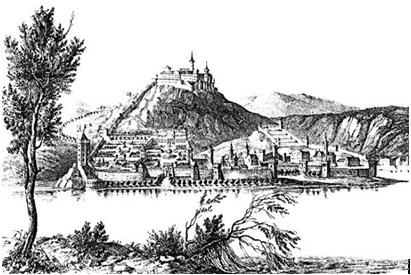
Clothes, Hair - style
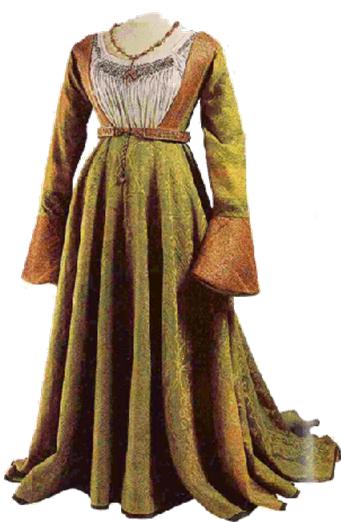 |
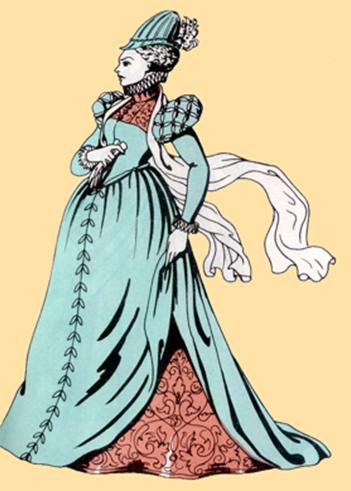 |
 |
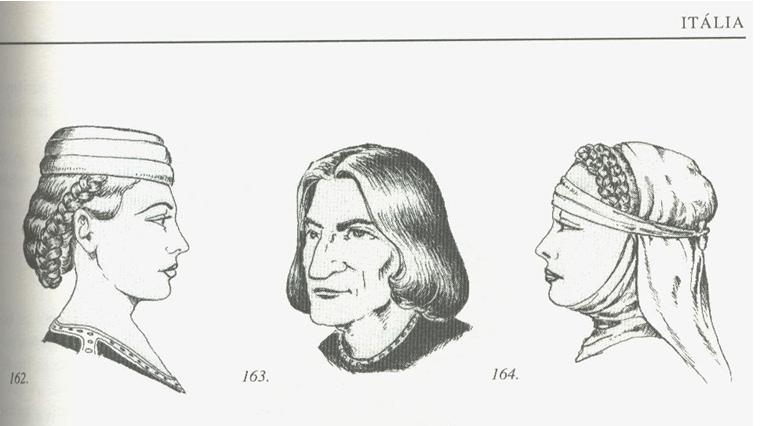 |
 |
The courts, habits of Hungarian kings differ in West-Europeans at the beginning of Matthias’s reign
The variety of Matthias’s renoissance kitvhen can be unimaginable today. The foods were so plentiful and carefully-closen int he king’s table. If we read their short story, we can see: the rich king’s repast int he period of Matthias’s films isn’t an exaggeration.
Galeotto Marzio wrote rich quantity of fishfood were served in Matthias’s coust. The mouset favourite fishfood were pike, ell and trout int he count. The meat of a fat neacock was one of the most favourite and the most delicious meal int he king’s table. Wide variaty of Italian chees was excellent food by Queen Beatrix at that time.
Gorlic and onion were used a lot by the cooks of the court; Italian nut saffron, cinnamon, pepper, ginger, aniseed and dill belonged to the favourite spices at those days.
Meats were served in very spicy sauce ont he king’s table, inside of the bread was used to thicken soops and souce because saux wasn’t know at that time.
Sour cream and vingar were known and thay made gourmeet meals with theam.
The period cookers cooked with ail and butter, lard only became more popular later. So we can remark that Matthias’t cuisine lives its Renassance because nowadays - because of the healthy nutrition- it isn’t advisable to fry in land.
Honey, raisin, fig, apple and pear were very poppular and liked int he period of Matthias, nutcake parcake, strudel, different types of souflés, cake and custart from wine were the top of the princely repost.
Source:www.matyaseve.hu
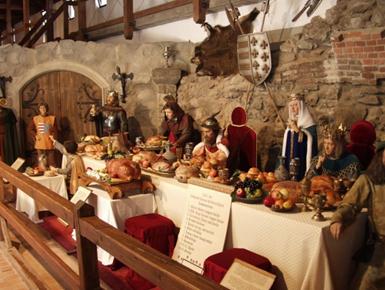
The first familiar hungary recipe
The civilization story and archeology source examine by the side of, emphasis sy wants to recline the formula project. Alone the 15.centerary we namely the disquisition hungary concern on food writing down. On this in the face of Hans Wiswe already in 1970 refer to, is exists hungary recipe on previous on company. ,,The,, hungary cake’’ make writing down originality the 14. centerary from ,,Lobro di cacina’’ to be found.
"Hungary cake 12 on personal"
You take one good fat castrate cock and one big pig side! You take half sweet and delicious spice. Take fresh grease, that no salty and 3 bread flour. The castrate cock and a pig side slaughter small fragment and cut 2 onion and these you put up is baking the grease. You accord towards sy one pinch sweet spice, lot of saffron and one small salt. By when roast appease one glass water. Take the flour and the salt and you knead. Take the butter to accord one agitator bailer. You do out of it 18 leaf and take castrate cock and other entities you take stuffing. Take make one dropping base and you put a leafs. The cake from below, from above lot of fir claim.
Source:FÜREDER Balázs: Hungary cake 12 on personal.In: Lymbus,2006.7.
Recipe recommendation, Renaissance course
Carp carnation liquid
The old carp beautifully you shell: salt, henceforth you hit con oil. The drawn nut break up and to pot cut bread. Cone vinegar and wine and you boil up, you mix. You put sea- grapes, pepper and carnation. First boil up! Int he future pu up fish, cooking a bit but no for a long time. (The wine white wine )
The recipe: KOVÁCS József: Szentbenedek Mihály cookbook 1601-suff.
Ponty: 1 kilogram
Salt, pepper, clove
Olive-green: 1 deciitre
Nut: 20 deka
Bread: 30 deka
White wine vinagar: 0.5 decilitre
White wine: 2 decilitre
Ribiszke: 20 deka
Carnation-liquor the omelet catfish, carp and else fish
Have sam: raisin, honey-cake, one bun, chives, you grinding. Puting up the fire, and puting wine, and condimending: cinnamon, carnation, saffron, putting clear raisin, scant honey and scant vinegar, putting the fish and you dishing.
The recipe: RÁDVÁNYSZKY Béla: old Hungarian cookbook. 1893
Raisin, sultana: 5 deka
Koney-cake: 5 deka
Roll: 1 piece
Chives: 3 deka
White wine: 2 decilitre
Salt, clove, cinnamon, saffran
Honey: 2 tablespoon
White wine vinegar: 0.5 decilitre
Caffish, sheat-fish: 1 kilogram
Oil: 2 decilitre
Apple in crumbs
Peel the apple, cut it towards four, cut his seed out, dip it into dilute pasta, and jerk it in boiling butter. Put it into a dish and fling it up with cane sugar.
The origin of the prescription: Csáktornya Zrínyi udvar is XVII.század manuscript cookbook.
Apple: 12 piece
Egg: 4 piece
Milk: 4 decilitre
Flour: 40 deka
Brown sugar: 30 deka
Salt
Apple feketeribizlis cake
Cut an apple and lay a corn grape to it. Jerk it with butter with cinnamon and cane sugar. Hadd hüljön who. Do it into buttery pasta and you may serve it.
The origin of the prescription: Teetotaller Anna's cookbook from 1690.
Butter: 30 deka
Flour: 45 deka
Castar sugar: 15 deka
Yolk: 4 piece
Half lemon peel
2 package vanilla sugar
30 deka black ribiske
5 piece apple
4 tablespoon
20 deka nut
Cinnamon
adv about 10 deka butter
Source: http://www.falusiturizmus.eu/receptek/reneszansz+etelek/reneszansz+etelek.html
Folk beliefs, popular beliefs Mátyás being attached to a day
Ice-breaker Mátyás
The February from among end illustrious days maybe the best-known one 24th, Mátyás, the ice-breaker, who brings it or breaks the ice. „Does ice if there is not ice, ruins the ice, If there is ice Mátyás melts it, breaks it and digs a hole....” - the ancient Hungarian calendars reminded of the very popular weather forecast of the snow of late winter in this manner today between many people. We have a proverb, that: Mátyás, Gergely two bad men - what indicates that time is cold, windy one on these two days the most mostly. According to the folk watch the Mátyás day cold good crop, the wind prophesies little egg. The fishers, was if any kind of fish was caught on this day, it was called Mátyás pike, and this onto a whole year reported fortune, they may have been hoping for baggy plunder. On single countries the Mátyás day goose egg it was marked, or did not spend, because it was kept in that manner, that it hatched from this egg a goose brings a misfortune, but maybe, that there will be a cripple. Ice-breaker to Mátyás day - beside the known and mentioned beliefs - more superstitions were attached. You are rain on this day if snow did not fall, then Szeged neighbourhood they collected dew. The dewy bedsheet was laid on the cow, that milk, and let the pail be his winter always, or as it was said in many directions on the Dunántúl, the zséter.
Source: http://www.szoboszlokepeskonyve.hu/honapok/2.php
February the day of 24. Mátyás
There is cold very much on Mátyás day. The next folk proverb indicates this: "Breaks it if he does not hit home if Mátyás finds ice, makes.”
Source: http://www.tujvmkvk.hu/nepszokasok.html
February the 24. - Mátyás day /ice-breaker Mátyás/
The February from among end illustrious days maybe the best-known one 24th, Mátyás, the ice-breaker. The name leads back onto icon graphic traditions. Mátyás of an apostle's the device martyrdom: a hatchet. They depicted it with a hatchet always in the churches because of this. The folk's imagination created a contact between the saint's holiday and the approaching spring: the apostle's hatchet breaks the power of the winter. That belief roamed Transylvania, if Mátyás does not set off on a day the ice drift, that Mátyás the pickax of the ice-breaker yet onto a couple of weeks to sharpen got it.
Mátyás brings it, or breaks the ice. „Does ice if there is not ice, ruins the ice, If there is ice Mátyás melts it, breaks it and digs a hole....”. The ancient Hungarian calendars reminded of the very popular weather forecast of the snow of late winter in this manner today between many people. Mátyás, Gergely two bad men - what indicates that time is cold, windy one on these two days the most mostly.
According to the tradition: „Mátyás lets out the spring from the finger”, And "Mátyás hands out the whistles to the birds on the day of his name, let them start singing”.
It from this daily weather they prophesied onto the crop, onto an egg progeny. The cold time good crop, the windy not a lot of signaled egg. They sowed wheat, barley, oat of the good crop in the hope if the time was snowy. The housewives carrot, parsley, pea, how the worms should not eat the seed. They were afraid that the ice batters it in case of rain the crop, and the grape will be sour. Many beliefs are attached to the Mátyás day egg. On single countries the Mátyás day goose egg it was marked, or did not spend, because it was kept in that manner, that it hatched from this egg a goose brings a misfortune, but maybe, that there will be a cripple. They kept it on other places for pugnacious one.
The fishers, was if any kind of fish was caught on this day, it was called Mátyás pike, and this onto a whole year reported fortune, they may have been hoping for baggy plunder.
Ice-breaker to Mátyás day - beside the known and mentioned beliefs - more superstitions were attached. You are rain on this day if snow did not fall, then Szeged neighbourhood they collected dew. The dewy bedsheet was laid on the cow, that milk, and let the pail be his winter always, or as it was said in many directions on the Dunántúl, the zséter.
Known proverb: „Is going silently, than behind Mátyás the fox on the ice.”
Source:http://network.hu/agnia/blog/%C3%A1gi-blogja/februari_nepi_kalendarium_iv-6894

